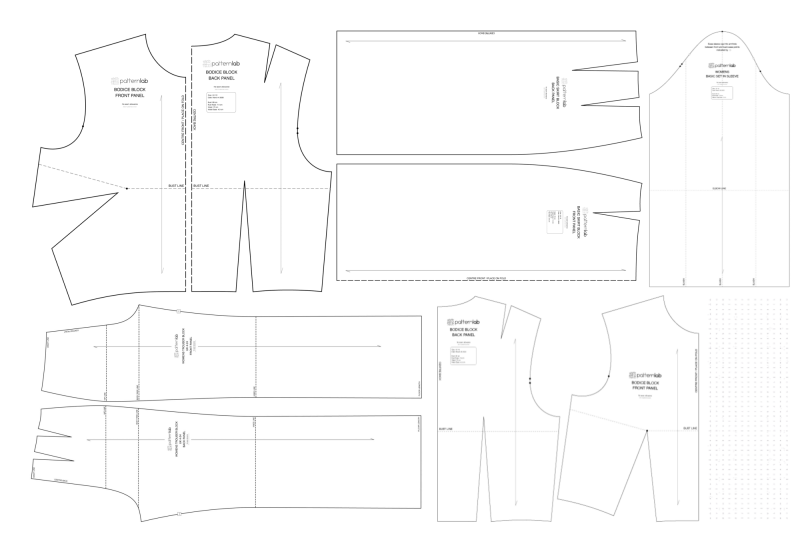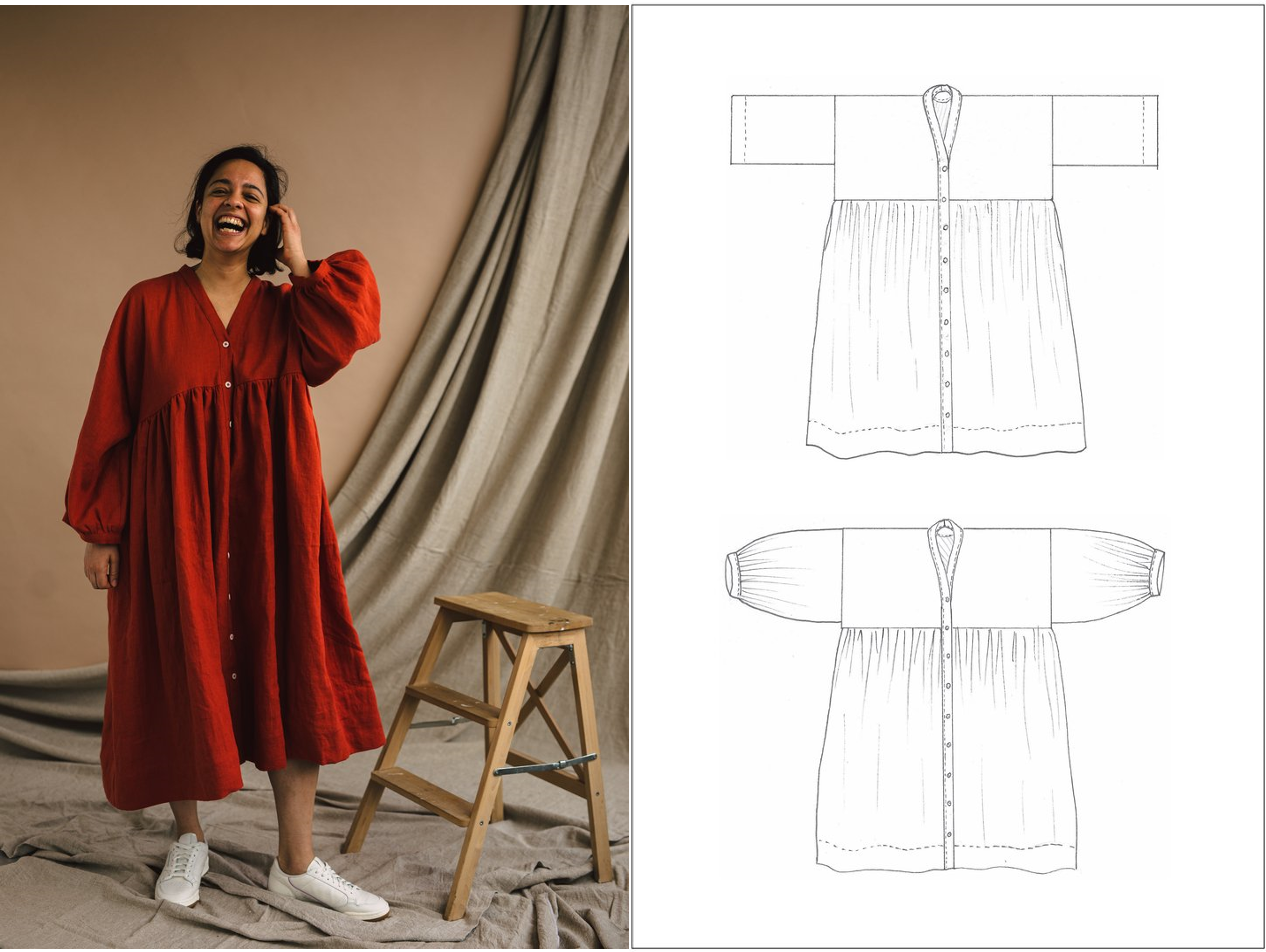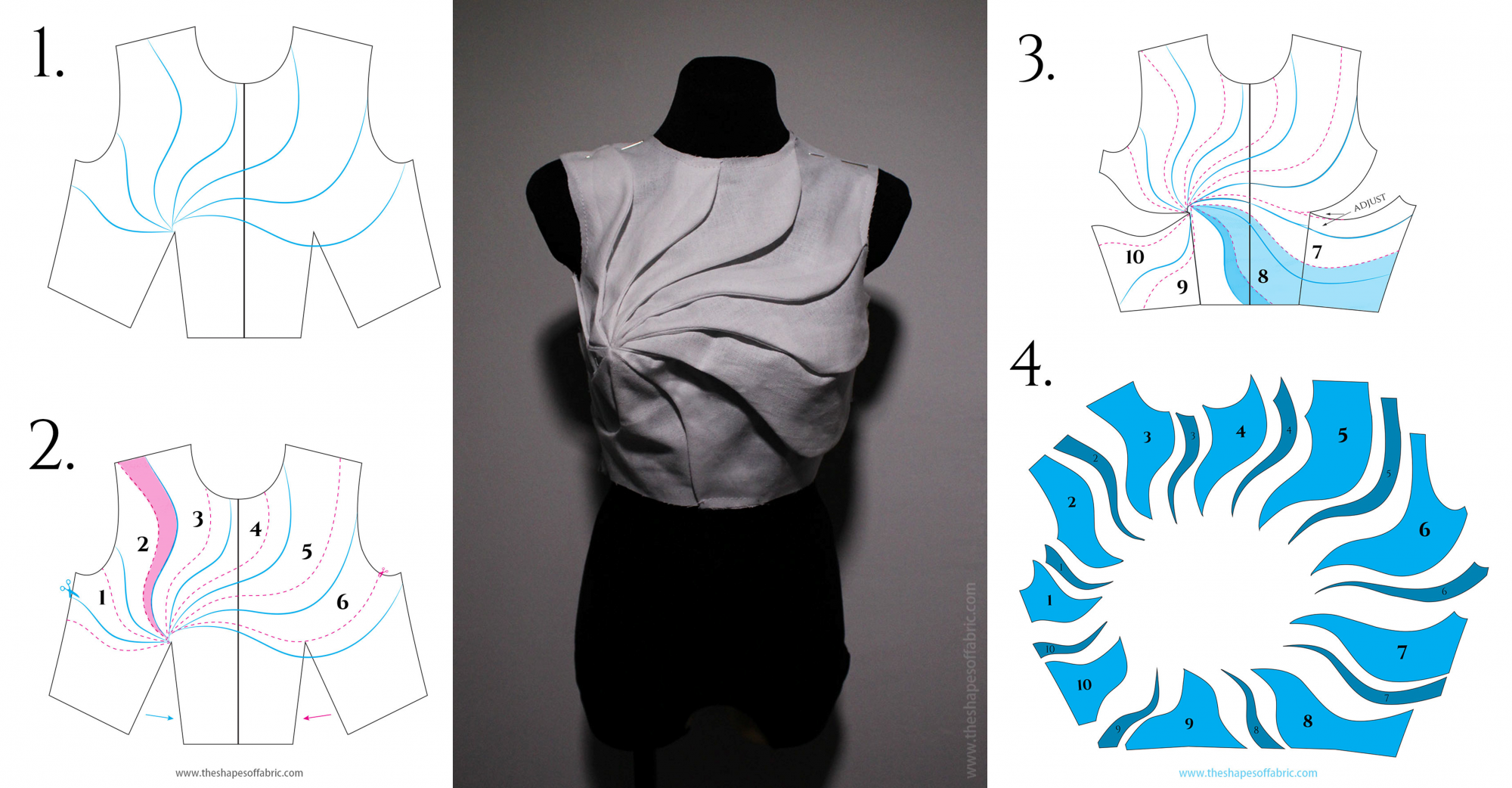The world of pattern cutting
12 July 2021

A guest blog by UCL student Fareeha Masood
Pattern cutting is one of the first steps involved in turning a piece of fabric into a garment. I like to think of pattern cutting as creating a net for a 3D shape, where the shape you’re trying to create is based around the measurements of a real person.
Traditionally, all clothes begin as a few basic blocks: a bodice, sleeve, skirt, or trouser block. These can be used by themselves or in combination (for example, dresses are made from joining a bodice and skirt block together). The basic blocks produce a simple, fitted starting point which can be manipulated into more wearable styles, by adding or removing features such as darts, pleats, gathers, volume and collars. Each clothing brand will have developed their own standard set of basic blocks that match the measurements of their target customer, and rely on pattern cutting techniques that lend themselves to the look they specialise in. It’s why season after season, as fabrics, prints, creative directors and styles change, fashion houses and brands can maintain a signature style.
Given how influential the pattern cutting stage is to a finished garment’s aesthetic and silhouette, what would happen if we reimagined the basic block? Innovative pattern cutting techniques provide an exciting space in fashion design… Here are just a few examples:
Subtraction pattern cutting
Subtraction pattern cutting is a technique developed by Julian Roberts. The reverse of traditional pattern cutting, Julian’s method looks at removing shapes from a flat material, to create empty spaces for the body to occupy. He describes it as “an approach to garment making that incorporates chance discovery, distance and the ability to cut fast and inaccurately without too much reference to numbers, fractions or sizing scales.” This is because the garment design comes from the process of pattern cutting itself, rather than working backwards to create a net after the final design of a garment is imagined.
No garment made with subtraction pattern cutting can be truly recreated, and so each iteration of this method results in radical new designs. Nigerian fashion students using traditional African textiles and prints created pieces that were completely different to students using the same method in Russia. Thanks to how accessible Julian has made his process, you can experiment with the method too, with no maths or prior knowledge about clothing design, though this must-read PDF.
Zero waste pattern cutting

Zero waste pattern cutting is one method that is moving towards sustainable fashion. It uses every inch of a fabric to create a garment, so that there is ‘zero waste’ left. Given the rectangular shape of fabric, many zero waste designs lend themselves to boxy silhouettes. In many ways, the influence that the shape of flat fabric has on the final design makes this method similar to subtraction pattern cutting. As a relatively new form of pattern cutting, the boundaries of what designs can be made using the zero waste method are constantly being pushed. A good place to start learning and experimenting is this zero waste collective.
Japanese pattern cutting and the Transformational Reconstruction technique
Japanese pattern cutting caught the world’s attention in the 1970s, when designers Rei Kawakubo of Comme des Garçons and Yohji Yamamoto debuted their designs in Paris. The avant-garde collections that this method produced reimagined how clothing can drape and look on the body.
Similar methods can be learnt through the Pattern Magic book series by Tomoko Nakamichi, or the Transformation Reconstruction technique developed by Shingo Sato. A key feature of these methods involves breaking the basic block into multiple pieces, so that when seams meet, it results in a highly sculptural design.
 I hope these examples have inspired you to think about the different ways we can create clothes, and how much influence pattern cutting can have on producing innovation and diversity in fashion design. If you experiment with any of these techniques – or come up with a new method of your own – we’d love to see what you create!
I hope these examples have inspired you to think about the different ways we can create clothes, and how much influence pattern cutting can have on producing innovation and diversity in fashion design. If you experiment with any of these techniques – or come up with a new method of your own – we’d love to see what you create!
Fareeha Masood is a Laidlaw Scholar and History student at University College London, and has co-programmed a pattern cutting event with the Institute of Making team. Fareeha finds style inspiration in museums and magazines, but also in everyday people walking the streets and catching the tube. She’s eager to see a world where everyone has the means to express their individual style, and so is conducting research into diversity and innovation in clothing design.
Image Credits: 1. https://patternlab.london/home/ 2, 3. Free Cutting, Julian Roberts 4. https://www.birgittahelmersson.com/ 5. https://www.theshapesoffabric.com/2020/05/24/advanced-tr-cutting-techniques/